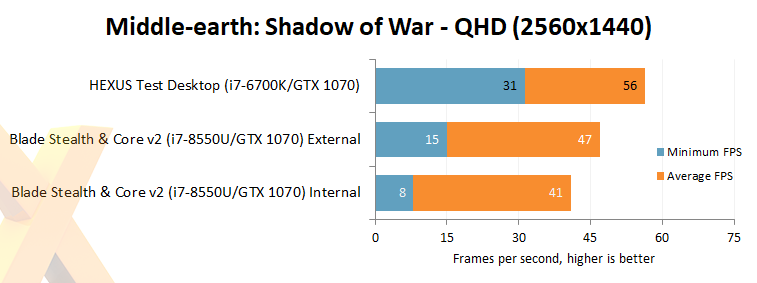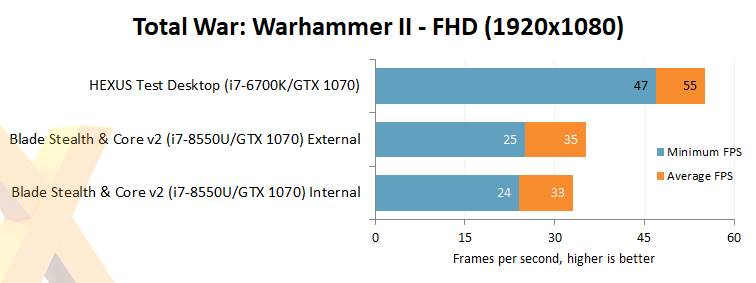Benchmarks: Gaming


The performance drop-off becomes more pronounced in certain games. Playing Deus Ex at 1080p on a GTX 1070 desktop with maximum image quality settings returns an average 61 frames per second. The Blade Stealth and Core v2 combination can only muster 39 at best.


It is interesting to note that Razer recommends benchmarking Core v2 using an external display in order to minimise bandwidth utilisation by having to loop the signal back. We've ran our numbers using the Blade Stealth's internal screen as well as an external Philips QHD monitor, and there is a performance advantage when using a dedicated panel.


In most scenarios a GTX 1070 can make light work of high-quality QHD gaming, but when attached to a low-power laptop via an external dock, the GeForce GPU struggles to reach the expected heights.
Perusing our log files reveals that power isn't an issue. Our GTX 1070 ran consistently at 1,987MHz under load, with no signs of throttling and an acceptable peak GPU temperature of 72ºC. Power consumption for the entire system (Blade Stealth, Core v2 and peripherals) was measured as 190 watts when gaming.


There are two ways to interpret the results. True, it would be a stretch to suggest that Blade Stealth and Core v2 can offer a true desktop-like experience, but on the other hand, the laptop alone has barely any games-playing potential at all. Adding the external graphics card (at considerable cost) increases your gaming mileage significantly, and unlike most full-fat desktops, you can then detach and take the Ultrabook with you. It's not the best of both worlds, but a useful option to have.









